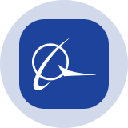-
 bitcoin
bitcoin $87959.907984 USD
1.34% -
 ethereum
ethereum $2920.497338 USD
3.04% -
 tether
tether $0.999775 USD
0.00% -
 xrp
xrp $2.237324 USD
8.12% -
 bnb
bnb $860.243768 USD
0.90% -
 solana
solana $138.089498 USD
5.43% -
 usd-coin
usd-coin $0.999807 USD
0.01% -
 tron
tron $0.272801 USD
-1.53% -
 dogecoin
dogecoin $0.150904 USD
2.96% -
 cardano
cardano $0.421635 USD
1.97% -
 hyperliquid
hyperliquid $32.152445 USD
2.23% -
 bitcoin-cash
bitcoin-cash $533.301069 USD
-1.94% -
 chainlink
chainlink $12.953417 USD
2.68% -
 unus-sed-leo
unus-sed-leo $9.535951 USD
0.73% -
 zcash
zcash $521.483386 USD
-2.87%
How should developers troubleshoot problems when Binance API interfaces fail?
Troubleshoot Binance API failures by checking documentation for error codes, verifying API keys and permissions, implementing robust error handling (try-except blocks & logging), managing rate limits, and using network diagnostic tools if needed; consider server-side issues as a last resort.
Mar 19, 2025 at 01:28 pm

- Understanding potential error sources in Binance API calls.
- Utilizing Binance's official documentation and error codes.
- Implementing robust error handling mechanisms in your code.
- Debugging techniques for common API failure scenarios.
- Strategies for rate limiting and API key management.
- Importance of testing and monitoring API interactions.
Developing applications that interact with the Binance API requires robust error handling. Failures can stem from various sources, including network issues, incorrect API keys, rate limiting, insufficient permissions, or server-side problems on Binance's end. Effective troubleshooting demands a systematic approach.
First, consult Binance's official API documentation. This resource provides detailed information about each endpoint, including expected responses, potential errors, and their corresponding codes. Understanding these codes is crucial for pinpointing the issue's root cause. Many errors are clearly defined with helpful descriptions.
Next, ensure your API keys are correctly configured and possess the necessary permissions. Double-check for typos in your key and secret, and verify that the API key has the appropriate access levels for the endpoints you're calling. An incorrectly configured API key is a frequent source of errors. Consider using environment variables to securely store your keys outside of your codebase.
Implementing comprehensive error handling within your code is paramount. Wrap your API calls within try-except blocks to catch exceptions. Log detailed error messages, including the specific error code, timestamp, and request details. This information is invaluable for debugging and identifying recurring problems. Proper logging allows for efficient post-mortem analysis.
Network connectivity problems can disrupt API calls. Before assuming a Binance API problem, verify your internet connection. Tools like ping and traceroute can help diagnose network-related issues. Ensure your firewall isn't blocking access to Binance's servers. Temporary network outages on your end are common causes of API failures.
Rate limiting is a common issue when interacting with APIs. Binance imposes limits on the number of requests you can make within a specific time frame. Exceeding these limits results in temporary blocks. Implement rate limiting mechanisms in your code to avoid exceeding these limits. Employ techniques like exponential backoff to retry failed requests after appropriate delays.
When dealing with authentication failures, meticulously check the validity of your API key and secret. Binance provides tools to regenerate or manage your keys, enabling you to quickly resolve authentication problems. Remember that compromised keys need immediate revocation and replacement for security.
Testing your API interactions thoroughly is crucial. Use test environments and mock data to simulate various scenarios, including error conditions. Automated testing helps prevent unexpected issues in production. Regularly monitor your API calls to identify trends and potential problems before they impact your application's users. This proactive approach reduces downtime.
Debugging complex API issues may require analyzing network traffic. Tools like Fiddler or Charles Proxy allow you to inspect HTTP requests and responses, providing insights into the communication between your application and the Binance API. This detailed analysis can uncover subtle errors that are not immediately apparent.
Finally, remember that server-side problems on Binance's end can sometimes cause API failures. Check Binance's status page for any reported outages or maintenance periods. If a server-side issue is suspected, patience is key; waiting for Binance to resolve the problem is the only recourse. Monitoring Binance's status page is crucial for preemptive measures.
Frequently Asked Questions:Q: What are the most common Binance API errors and how can I address them?A: Common errors include authentication failures (incorrect API keys), rate limit exceeded errors (too many requests), and server errors (problems on Binance's side). Address authentication issues by verifying API key details. Rate limit errors require implementing rate-limiting strategies. Server errors necessitate checking Binance's status page and waiting for resolution.
Q: How can I effectively handle API rate limits?A: Implement exponential backoff algorithms to retry requests after a delay that increases exponentially with each failed attempt. Use asynchronous requests and queuing mechanisms to manage concurrent requests effectively. Carefully monitor your request rate to avoid exceeding the limits.
Q: What tools are useful for debugging Binance API issues?A: Network monitoring tools like Fiddler or Charles Proxy allow you to intercept and inspect HTTP requests and responses. Logging libraries in your programming language provide detailed records of API calls and responses, aiding in debugging. Binance's official API documentation offers comprehensive information on error codes.
Q: Where can I find detailed information on Binance API error codes?A: Binance's official API documentation is the primary source. This documentation lists all possible error codes with explanations, allowing developers to quickly identify and address the root cause of failures.
Q: How do I secure my Binance API keys?A: Never hardcode API keys directly into your code. Use environment variables or secure configuration files to store them. Regularly rotate your API keys and revoke access to old ones. Limit the permissions granted to each API key to only what is absolutely necessary.
Disclaimer:info@kdj.com
The information provided is not trading advice. kdj.com does not assume any responsibility for any investments made based on the information provided in this article. Cryptocurrencies are highly volatile and it is highly recommended that you invest with caution after thorough research!
If you believe that the content used on this website infringes your copyright, please contact us immediately (info@kdj.com) and we will delete it promptly.
- 1inch and Blockscan Revolutionize Cross-Chain Transactions with New Explorer
- 2025-12-16 01:10:02
- Solana's Shifting Narrative: Blockchain Dominance Meets Evolving Investor Focus, Analyzed by CoinGecko Data
- 2025-12-16 01:25:01
- Ueda's Bold Hand: Bank of Japan Charts New Course with Tightening Policy
- 2025-12-16 01:25:01
- Wet Token Splashes onto the Scene with Astounding Price Increase in Cryptocurrency Market
- 2025-12-16 01:00:01
- Navigating the Crypto Currents: Ethereum, Solana, XRP, and the Ozak AI Surge
- 2025-12-16 01:20:01
- SBP Policy Rate Cut Sparks Outcry: Business Community Demands Deeper Cuts for Economic Revival
- 2025-12-16 01:20:01
Related knowledge

What does it mean to "Hedge" a position on Bybit and how do I do it?
Dec 11,2025 at 07:00pm
Understanding Position Hedging on Bybit1. Hedging on Bybit refers to opening opposing positions in the same trading pair to reduce exposure to adverse...

How to secure my Bybit account against phishing and scams?
Dec 12,2025 at 11:39am
Enable Two-Factor Authentication (2FA)1. Log in to your Bybit account and navigate to the Security Settings section. 2. Select Google Authenticator or...

What is the "Reduce-Only" option on Bybit and how does it prevent accidental orders?
Dec 15,2025 at 10:40am
Understanding Reduce-Only Mode1. Reduce-Only is a risk control feature on Bybit that restricts order execution to positions that only decrease or clos...

How to convert small balances ("dust") to another coin on Bybit?
Dec 07,2025 at 08:59pm
Understanding Dust Conversion on Bybit1. Dust refers to tiny, non-withdrawable balances of cryptocurrencies left in a user’s spot wallet after partial...

What are subaccounts on Bybit and why would I need to use one?
Dec 14,2025 at 06:00pm
Understanding Subaccounts on Bybit1. Subaccounts on Bybit are independent trading entities linked under a single master account, each with its own uni...

Why is the Bybit app not working or showing a connection error?
Dec 07,2025 at 06:00pm
Troubleshooting Network Configuration Issues1. The Bybit app relies heavily on stable internet connectivity to synchronize real-time market data and e...

What does it mean to "Hedge" a position on Bybit and how do I do it?
Dec 11,2025 at 07:00pm
Understanding Position Hedging on Bybit1. Hedging on Bybit refers to opening opposing positions in the same trading pair to reduce exposure to adverse...

How to secure my Bybit account against phishing and scams?
Dec 12,2025 at 11:39am
Enable Two-Factor Authentication (2FA)1. Log in to your Bybit account and navigate to the Security Settings section. 2. Select Google Authenticator or...

What is the "Reduce-Only" option on Bybit and how does it prevent accidental orders?
Dec 15,2025 at 10:40am
Understanding Reduce-Only Mode1. Reduce-Only is a risk control feature on Bybit that restricts order execution to positions that only decrease or clos...

How to convert small balances ("dust") to another coin on Bybit?
Dec 07,2025 at 08:59pm
Understanding Dust Conversion on Bybit1. Dust refers to tiny, non-withdrawable balances of cryptocurrencies left in a user’s spot wallet after partial...

What are subaccounts on Bybit and why would I need to use one?
Dec 14,2025 at 06:00pm
Understanding Subaccounts on Bybit1. Subaccounts on Bybit are independent trading entities linked under a single master account, each with its own uni...

Why is the Bybit app not working or showing a connection error?
Dec 07,2025 at 06:00pm
Troubleshooting Network Configuration Issues1. The Bybit app relies heavily on stable internet connectivity to synchronize real-time market data and e...
See all articles










































































